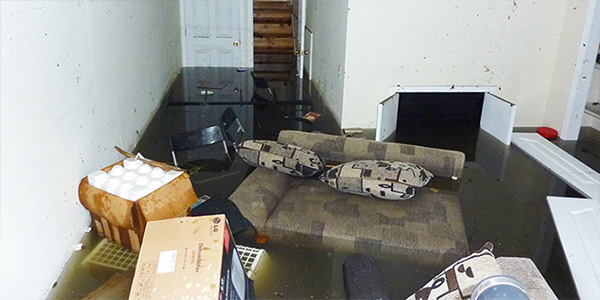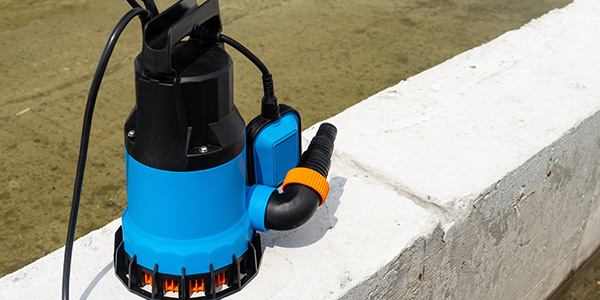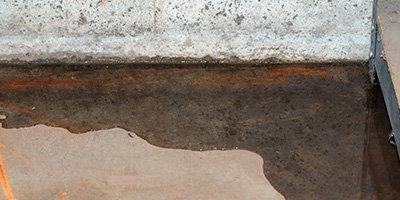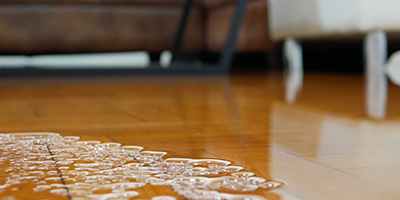What to Do When Your Basement Floods

5 Steps to Take When Your Basement Floods
Discovering a flooded basement would fill any homeowner with dread. Most people don’t plan for this unwelcome surprise, but when it happens, you need to act fast in order to limit the damage.
If water is currently coming into your basement, you should exercise extreme caution and follow the first step before taking additional action. Then, follow these steps to find the source of the flood, get water out of the basement and start cleaning up.
How to Dry and Clean Up a Flooded Basement
1. Make Sure Your Basement is Safe to Enter
The first thing you need to do when your basement floods is assess the situation. There’s risk of electric shock if the water is high enough to come in contact with an outlet or electrical wiring.

“If the water in your basement is more than a puddle and water continues to flow in, the first thing you need to do is think about your safety. If you believe electrical appliances or outlets are already underwater and you cannot walk through the basement without coming in contact with water, do not enter the basement. The most important thing to know is that as bad as the problem seems, it can get worse for you if you’re not careful.”
Paul Abrams | Public Relations Director, Roto-Rooter Services Co.
Check for these signs to determine if your flooded basement is safe to enter:
- Water depth: If the water is more than 2 inches deep throughout your entire basement, do not step into the water – you could get shocked. Call in a professional plumber or water damage specialist to pump the water out as soon as possible. Whenever flooding occurs, if you can access your main electrical service panel without entering the basement, turn off power to the basement. If your panel is not accessible, contact an electrician to shut off the power.
- Submerged appliances: If the water level in your flooded basement is approaching any gas-fired appliances, like your furnace or water heater, call the gas company and have them shut off the gas. Your pilot light could be out, and gas could be entering your basement. If you smell gas, exit the building immediately.
Once you’ve confirmed the basement flooding doesn’t pose an electrical or gas-related hazard, or you’ve taken care of these issues, you can move on to the following steps.
2. Find the Source of the Basement Flood
Try to determine why your basement is flooding and stop it. Even if you can’t stop the flood, you’ll save precious time if you’re able to inform your plumber or contractor about the source of the water as soon as they arrive.
How do you find the source of your flood? Scan the area, and try to pinpoint how the water is getting in. These entry points are the most common culprits of basement floods:
- Floor drain: This usually indicates an issue with your sump pump, home or yard drainage system, or that there’s a backup in the city sewer lines. You should find a plumber and get them on-site. If the plumber determines that the issue was caused by the municipal sewer system, you should call your city to notify them.
- Appliances or plumbing: If the hoses connected to your washer or water heater are spewing water, immediately shut off water to the broken fixture. If you think a burst pipe is the source of the problem and can’t determine which fixture is broken, shut off water to the entire house.
- Floor or windows: This is likely the result of heavy rains and/or a too-high water table. You may have to wait for the weather to change before the water will stop rising. If the water depth is safe to enter, shut off power to the basement in case the water continues to rise, and then start moving your belongings to higher ground.
- Walls or foundation: Water leaks in these areas are also typically caused by a storm. Leaking basement walls and cracks in the wall or floor will generally appear after heavy rain, but can be signs of a more serious problem with your home’s foundation.
Once you’ve determined the source of the flooding, and have possibly stopped the leak, you can move on to saving items from the flooded basement.

When your basement is flooded from heavy rain or severe weather, you may be facing more than just water damage. If you need to clean up after a storm, we can help with that as well.
Find more tips on basement flood cleanup and repairing water damage after a storm in our Essential Severe Weather Guide.
After figuring out the source of the flooding, and possibly stopping the leak, try to save items from water damage.

3. Start Salvaging Your Belongings
Once the area is safe to enter, move quickly through your flooded basement and unplug all electronics. This is an important safety measure to follow, especially if the water continues to rise. Paul Abrams of Roto-Rooter also advises, “Wear gloves and rubber boots if you enter a flooding basement.”
Then, start moving your belongings to higher ground. You won’t be able to move everything out of the basement, so prioritize the most important items to save.
Focus on items that are the most expensive or will be the hardest to replace, including:
- Important documents: Titles, deeds, passports and financial records.
- Family keepsakes: Heirlooms, photo albums, books and souvenirs.
- Electronics: TVs, desktop computers, laptops and other portable electronics.
4. Get the Water Out of Your Basement
The faster you can dry a wet basement, the better chance you have at preventing mold after a flood and other long-term damage to your home. Start by removing standing water. If it’s relatively shallow, you can work with mops and buckets.
If the standing water is several inches deep, you have a few options:
- A submersible pump: These can be rented or purchased at hardware and pool supply stores.
- A wet/dry vac: This might be a better option if you already own one, or if only a small area of your basement has deep standing water. These can also be rented at your local hardware or home improvement store.
Your basement will still be damp when the standing water is gone. Here are a few tips to help speed up the drying process:
- Open basement windows (if weather permits) to help the moisture escape.
- Set up fans throughout your basement, and turn them on high to speed up evaporation. Position them so they’re blowing out of the basement, either through windows or toward the stairs.
- Place space heaters around the basement to help the remaining water evaporate faster. This will result in a humid environment, so it’s best to combine this approach with the use of a dehumidifier.
Get ahead of the next flood or leak. Learn how to protect your home from water damage in the future.

5. Start the Post-Flood Cleanup
Getting rid of any ruined belongings is a top priority in the basement flood cleanup process. You should not attempt to save:
- Electronics that were damaged by the water.
- Fabric items that are not washed and dried within 48 hours.
- Drywall, rugs and carpeting that have been submerged in flood water.
- Drenched upholstered furniture, unless it’s been cleaned by an expert.
If you’re questioning the safety of any item, call in a professional to make sure nothing you’re saving is at risk of growing mold or bacteria. Take pictures to document the water damage and your lost possessions at this point if you plan to file a home insurance claim.
Have a Lot to Get Rid of After Cleaning Up?
Consider a residential dumpster rental to easily dispose of your waste as you clear out the basement.
Tips to Prevent Mold After a Flood
- Use warm water and bleach, or a cleaning product with a disinfectant, to thoroughly clean the walls and floors. Let dry, then repeat.
- Clean any furniture or fabric items that came in contact with the flood water using warm, soapy water.
- Open windows and doors to allow wet items to air-dry. Use fans and dehumidifiers to speed up the process.
- Wipe down all exposed areas with a mold control product, or make plans to have a restoration specialist visit your home to help prevent mold growth.



